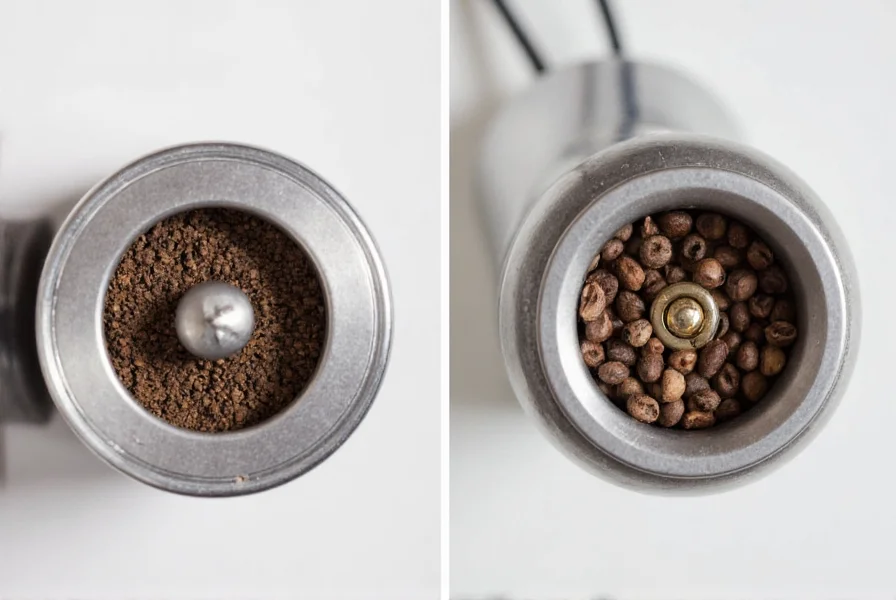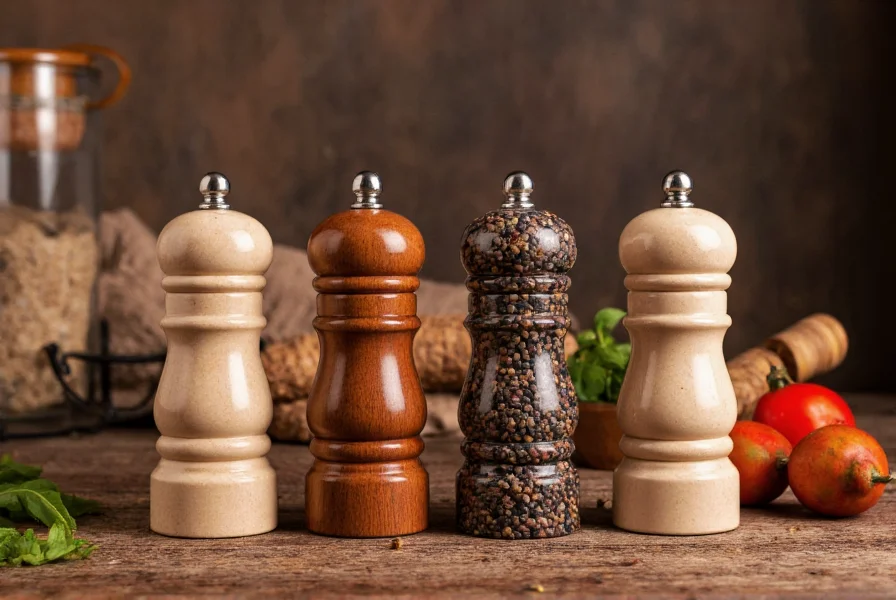When selecting a pepper mill, understanding the fundamental differences between mechanisms, materials, and designs makes all the difference in your culinary experience. Freshly ground pepper releases volatile oils that create complex flavors impossible to achieve with pre-ground alternatives. This comprehensive guide explores everything you need to know about pepper mills to make an informed decision based on your specific kitchen needs and cooking habits.
Types of Pepper Mills: Manual vs. Electric
Pepper mills fall into two primary categories: manual and electric. Manual pepper mills require physical effort to turn a crank or twist mechanism, giving users precise control over grind size and quantity. This traditional approach remains popular among chefs who value the ritual of seasoning and need exact control during cooking. Electric pepper mills automatically grind peppercorns with the press of a button, offering convenience particularly valuable for those with limited hand mobility or when preparing large quantities of food.
When considering best pepper mills for kitchen use, evaluate how frequently you cook and your physical capabilities. Professional chefs often prefer manual mills for their precision, while home cooks with arthritis might benefit from electric models. The manual vs electric pepper grinder decision ultimately depends on personal preference, cooking style, and physical considerations.

Grinding Mechanisms: Ceramic vs. Steel
The heart of any quality pepper mill is its grinding mechanism. Two primary materials dominate the market: ceramic and stainless steel. Ceramic mechanisms resist corrosion from salt, making them ideal for salt mills or dual-purpose salt and pepper mill sets. They maintain sharpness longer than steel but can become brittle over time. Stainless steel mechanisms provide exceptional durability with pepper and offer consistent grinding performance for years, though they corrode when exposed to salt.
| Mechanism Type | Best For | Lifespan | Maintenance Needs |
|---|---|---|---|
| Ceramic | Pepper or dedicated salt mills | 5-10 years | Keep dry, avoid moisture |
| Stainless Steel | Pepper only | 10+ years | Occasional cleaning, keep dry |
| Carbon Steel | Budget pepper mills | 2-5 years | Requires frequent drying |
Understanding ceramic vs steel pepper grinder differences helps prevent common mistakes like using a steel mechanism with salt, which causes rapid deterioration. For those seeking versatile salt and pepper mill sets, look for models with ceramic mechanisms specifically designed to handle both seasonings without cross-contamination.
Key Features to Consider When Choosing
When learning how to choose a pepper mill, several features significantly impact performance and user experience. Adjustable grind settings allow customization from fine powder to coarse cracks, essential for different culinary applications. Pepper mills with larger capacity reservoirs reduce refilling frequency, while transparent windows let you monitor peppercorn levels. Ergonomic designs with comfortable grips prevent hand fatigue during extended use, particularly important for manual models.
Top-quality mills feature one-handed operation mechanisms, allowing you to season food while holding utensils or cookware. Look for models with easy disassembly for cleaning and maintenance. The adjustable grind pepper mills with multiple settings (typically 5-10) provide the most culinary versatility, letting you match grind size to specific dishes—from fine grinds for sauces to coarse cracks for steak seasoning.
Maintenance and Care for Longevity
Proper maintenance extends your pepper mill's life significantly. Always use whole peppercorns rather than pre-cracked pepper, which can clog mechanisms. Periodically disassemble your mill according to manufacturer instructions to remove built-up oils and residue. For maintaining your pepper mill, run uncooked rice through the mechanism occasionally to clean internal parts without damaging the grinding surface.
Store mills in a cool, dry place away from humidity. Never wash mill mechanisms under running water—instead, use a soft brush for dry cleaning. When refilling pepper mills, ensure peppercorns are completely dry to prevent moisture buildup that can cause corrosion or mold. For electric models, replace batteries promptly when performance declines to avoid inconsistent grinding.
Troubleshooting Common Issues
Several common pepper mill problems have straightforward solutions. If your mill stops grinding, check for moisture in the peppercorns or built-up residue in the mechanism. For inconsistent grinding, adjust the setting to a coarser grind temporarily to clear any blockages, then return to your preferred setting. When salt mills become clogged (typically with steel mechanisms exposed to moisture), disassemble and clean thoroughly with a soft brush.
For mills that won't dispense pepper despite turning, inspect for peppercorn jams or worn mechanisms. Many modern mills feature transparent sections to help identify blockages. If your stainless steel pepper grinder benefits seem diminished due to inconsistent grinding, the mechanism may need replacement—a service many quality manufacturers offer separately from the entire mill.
Frequently Asked Questions
Can I use the same pepper mill for salt?
Only if it has a ceramic grinding mechanism specifically designed for salt. Stainless steel mechanisms corrode when exposed to salt, causing rapid deterioration. Dedicated salt mills with ceramic mechanisms resist corrosion, while pepper mills typically use steel mechanisms optimized for pepper's properties.
How often should I clean my pepper mill?
Clean your pepper mill every 2-3 months with regular use, or immediately if grinding becomes inconsistent. For frequent users, monthly maintenance may be necessary. Always disassemble according to manufacturer instructions and use a soft brush—never submerge the mechanism in water. Running uncooked rice through the mill occasionally helps remove built-up oils.
Why does my pepper mill stop working after getting wet?
Moisture causes peppercorns to swell and jam the grinding mechanism. Steel mechanisms can also begin to corrode when exposed to moisture. Always ensure peppercorns are completely dry before refilling, and store mills in dry environments. If your mill gets wet, disassemble it immediately, dry all components thoroughly, and run uncooked rice through the mechanism to absorb residual moisture.
What's the difference between pepper mill mechanisms?
Ceramic mechanisms resist corrosion from salt and maintain sharpness longer but can become brittle over time. Stainless steel mechanisms provide exceptional durability with pepper and consistent grinding performance for years but corrode when exposed to salt. Carbon steel offers budget-friendly options with shorter lifespans. Higher-end mills often feature precision-engineered mechanisms with multiple grinding settings for culinary versatility.











 浙公网安备
33010002000092号
浙公网安备
33010002000092号 浙B2-20120091-4
浙B2-20120091-4